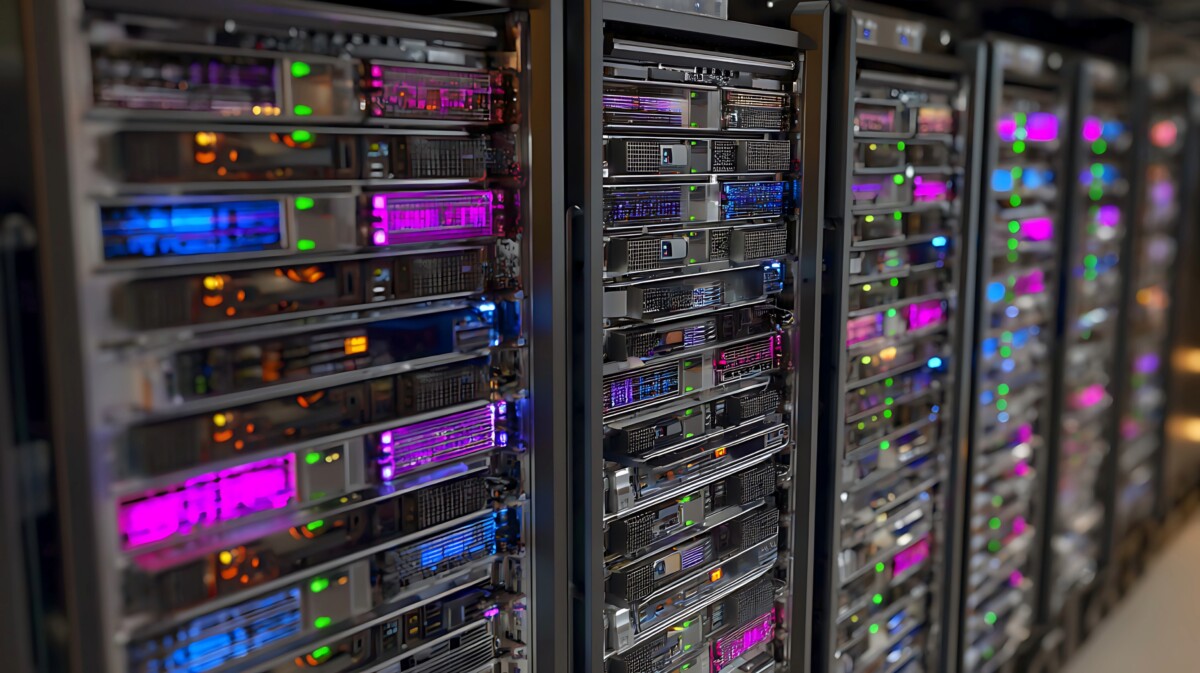- Boost your edge by choosing refurbished Dell PowerEdge servers to get enterprise performance at 30–70% lower cost.
- Follow a clear plan: buy a tested unit with a warranty, then scale by adding RAM, storage, CPUs, and network cards as you grow.
- Support your team and planet by using proven hardware that cuts e-waste, frees budget for training, and keeps systems reliable.
- Lean into the surprise that “refurbished” often means rigorously tested gear with fresh firmware and real vendor support.
When it comes to their IT infrastructure, small and medium-sized businesses (SMBs) find it more difficult to navigate their way.
They need to stay competitive, which means every technology investment must deliver top-notch value but at a low cost, because of their tight budgets and limited expertise.
Because servers are the backbone of modern business operations, it is especially true for these smaller businesses.
Generally speaking, businesses need servers that don’t break the bank yet perform well and are reliable, and this is exactly where refurbished Dell PowerEdge servers are a smart choice.
When you purchase a refurbished server, there might be thoughts of compromising on quality or power; however, that is a complete misconception.
To the contrary, by using refurbished servers, SMBs combine performance, sustainability, and flexibility, which is ideal.
Refurbished Dell PowerEdge servers are the ideal choice for small and mid-sized businesses; let’s investigate why this statement is true.
1. The Cost Advantage of Refurbished Dell PowerEdge Servers
The significant cost savings are probably the biggest advantage when choosing a refurbished Dell PowerEdge server.
When servers are brand new and configured with high-end components like multi-core processors, enterprise storage, or large amounts of memory, the price tag will definitely be on the high end, too.
However, there is a cost saving of between 30% and 70% when refurbished servers are acquired.
Without having to strain their IT budget, an SMB has the opportunity to access powerful hardware.
As we all know, every dollar counts when you are running a new and growing business.
There are so many other costs involved with a new business, which means the savings could be used for other equipment like software licenses, cybersecurity, and staff training.
Having the option to buy used servers can make a huge difference to a new business’s IT budget.
It’s an investment in proven and tested technology already used in the business environment, which means there is no trial and error needed, which saves time and money.
2. Performance and Reliability You Can Count On
Dell’s PowerEdge line, like all its other products, is of exceptional quality and known worldwide for its durability and enterprise-grade server hardware.
These PowerEdge servers are used in data centers and businesses of all sizes and are designed for growth, performance, and security.
The refurbishing process of a Dell PowerEdge server is rigorous.
It includes:
- Thorough diagnostics and testing
- Replacement of any faulty or worn components
- Cleaning and cosmetic restoration
- Firmware updates and full functionality checks
For peace of mind with purchasing a Dell PowerEdge server, reputable vendors often provide warranties and customer support.
Be on the lookout for extended warranties for additional coverage that can be purchased in some cases.
Refurbished Dell PowerEdge servers maintain enterprise-grade reliability at a fraction of the cost, which is perfect for SMBs.
You get the same strong performance as new equipment, but at a much more accessible price.
3. Scalability for Growing Businesses
One major concern is that SMBs are buying too much or too little hardware.
With new servers, there’s often pressure to “future-proof” your purchase by buying more capacity than you need today, which can waste precious budgets.
Dell PowerEdge servers are known for their modular and scalable architecture. You can start small and upgrade later by adding more:
- RAM
- Storage drives
- CPUs
- Network cards
This makes them ideal for growing businesses.
With refurbished servers, this flexibility is even more accessible.
The great news is that you can purchase a base unit now and add on with upgrades as required, without a suffocating price tag.
This ensures that the SMB’s IT growth aligns with the growth of the business, because you can expand as needed.
4. Sustainability Benefits of Refurbished IT Equipment
Sustainability is another reason why SMBs are turning to refurbished IT equipment, so it’s not only about cost and performance.
Global e-waste is a reality for one of the biggest contributors: the IT industry.
Making use of refurbished equipment helps to reduce the environmental impact of manufacturing and disposal.
But it’s not only good for the planet, it’s also good for your business.
Your company can save money while supporting sustainability goals by investing in Dell refurbished servers.
A smart step in building a greener brand image is to adopt eco-friendly IT practices from the word go.
It is important because consumers care about the environmental practices of the businesses they support in today’s world.
You would be joining a growing movement of businesses that value smarter resource use, reduced waste, and long-term sustainability, plus you are lowering your carbon footprint all at the same time.
5. Beyond Servers: Supporting Workstations
Workstations are the front line of a business, but we all know that servers are the heart of your IT infrastructure.
To do their jobs effectively, whether it’s designing products, managing data, or communicating with clients, employees simply need reliable machines.
When it comes to refurbished workstations, they also need to be cost-effective and reliable.
You can be sure of seamless productivity across teams when pairing servers with a refurbished workstation.
At a lower cost, you will be able to provide professional-level, high-performance machines that are ideal for design, general business, engineering, or development.
By choosing refurbished hardware from trusted providers, SMBs can build a complete IT environment from desktop machines to servers.
Costs are reduced, and all components are compatible, reliable, and ready to handle day-to-day business operations with this approach.
Summary
Refurbished Dell PowerEdge servers give SMBs enterprise-grade performance at a price that fits real budgets. The article makes a strong case: expect 30% to 70% savings versus new hardware while keeping reliability through rigorous refurbishing, including full diagnostics, component replacements, firmware updates, and final functionality checks. PowerEdge models are built to scale, so you can start small and add RAM, storage, CPUs, or network cards as your store grows, instead of overbuying upfront. Beyond cost and performance, refurbished hardware reduces e-waste and frees cash for essentials like software, security, and team training.
The business impact is direct. Lower capital costs improve cash flow, warranties reduce risk, and modular upgrades line up with growth milestones. Using tested, enterprise hardware cuts downtime and support headaches compared to consumer machines or cloud over-provisioning. With the right vendor, you get a reliable server foundation for ecommerce, ERP, analytics, or content workloads without the “new gear” premium.
Actionable advice for ecommerce founders and marketers
- Define the workload: list your top apps (storefront, database, BI, media) and map CPU, RAM, storage, and network needs for today and 12 months out.
- Buy for the next 6–9 months, not five years: pick a base PowerEdge model that meets current needs and supports easy upgrades.
- Demand proof of refurb quality: ask for the test checklist, firmware versions, SMART data on drives, and a clean bill of health.
- Lock in protection: choose vendors offering at least a 1-year warranty and optional extended coverage; confirm replacement SLAs.
- Plan your upgrade path: leave open DIMM slots, drive bays, and PCIe lanes; document when to add RAM or swap to SSD/NVMe.
- Secure and maintain: apply the latest firmware and OS patches, turn on MFA for admin access, and set a quarterly health audit.
Real-world implementation tips
- Start with a balanced build: 2 CPUs, 64–128 GB RAM, mirrored SSDs for OS, and RAID for data; keep two spare drive bays for growth.
- Separate duties: run databases on faster storage and keep media on cheaper, larger drives or external storage to control cost.
- Monitor from day one: track CPU, memory, disk I/O, and error logs; set alerts before performance dips affect customers.
- Stage before live: test site migrations and updates in a sandbox server to reduce downtime and rollback risk.
- Budget the gains: reallocate savings to conversion projects like faster product pages, richer media, and better email flows.
Next Steps
Refurbished Dell PowerEdge servers are a smart, low-risk way to get enterprise performance, save 30–70% on costs, and scale as you grow. You protect uptime with tested components and warranties, and you keep cash free for the projects that drive revenue. This week, define your workload, shortlist two refurbished models with clear upgrade paths, and request each vendor’s refurb checklist and warranty terms; then stage a test migration before go-live. If you want help drafting SOPs, migration checklists, or internal docs, use RightBlogger’s Tool Studio and Article Writer to create clear, reusable guides your team can follow with confidence.




